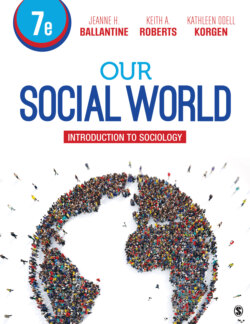Читать книгу Our Social World - Kathleen Odell Korgen - Страница 116
Industrial Societies.
ОглавлениеThe Industrial Revolution involved the harnessing of steam power and the manufacture of gasoline engines, permitting machines to replace human and animal power. A tractor can plow far more land in a week than a horse, and an electric pump can irrigate more acres than an ox-driven pump. As a result of such new technologies, raw mineral products such as ores, raw plant products such as rubber, and raw animal products such as hides could be transformed into mass-produced consumer goods. The Industrial Revolution brought about enormous changes in occupations, the division of labor, production of goods, and social structures.
Industrial societies rely primarily on mechanized production resulting in greater division of labor based on expertise. Economic resources were distributed more widely among individuals in industrial societies, but inequities between owners and laborers persisted. Wage earning gradually replaced slavery and serfdom, and highly skilled workers earned higher wages, leading to the rise of a middle class. Farm workers moved from rural areas to cities to find work in factories that produced consumer goods. Cities grew, and many became populated by millions of people.
Family and kinship patterns at the micro level also changed. Agricultural societies need large, land-based extended family units to do the work of farming (recall how the Ramirez parents, grandparents, and children in Nicaragua all help out at harvest time), but industrial societies need individuals with specific skills, the ability to move to where the jobs are, and smaller families to support. Family roles change. Children are an asset in agricultural societies and begin work at an early age. However, from a purely economic perspective, children become a liability in an industrial society because they contribute less to the finances of the family.
Meso- and macro-level dimensions of social life expand in industrializing societies and become more influential in the lives of individuals. National institutions and multinational organizations develop. Today, for example, global organizations such as the World Bank, the World Court, the United Nations, and the World Health Organization address social problems and sometimes even make decisions that change national boundaries or national policies. Corporations such as Nike and Gap are multinational organizations (located in many countries). Some voluntary associations—such as Doctors without Borders, which serves medical needs, and Amnesty International, which lobbies for human rights—do their work across the globe.
Perhaps the most notable characteristic of the industrial age is the rapid rate of change compared with other stages of societal development. The beginning of industrialization in Europe was gradual, based on years of population movement, urbanization, technological development, and other factors of modernization. Today, however, societal change occurs so rapidly that societies at all levels of development are being drawn together into a new age—the postindustrial era. As you will see, this rapid change and globalization have caused disruption in many societies, and reactions to the change vary widely.
